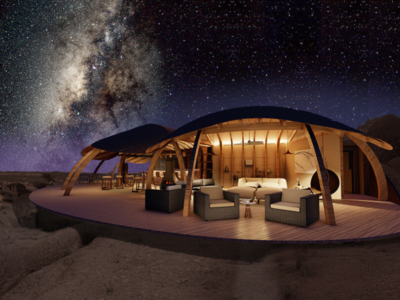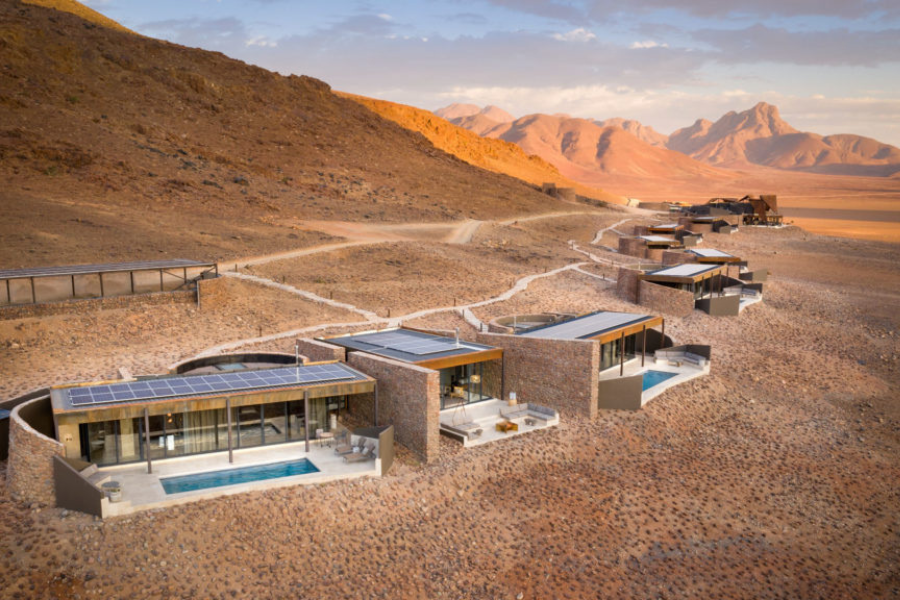Namibia Landsape
Namibia, a country in southwest Africa, is distinguished by the Namib Desert along its Atlantic Ocean coast. The country is home to diverse wildlife, including a significant cheetah population. The capital, Windhoek, and coastal town Swakopmund contain German colonial-era buildings such as Windhoek's Christuskirche,
| Languages spoken | English |
|---|---|
| Currency used | Pound sterling |
| Area (km2) | 824,292 |
| Country name | NAMIBIA |
| Things to do | 1. Go on Safari in Etosha National ParkEtosha National Park is probably top of my list of the best things to do in Namibia, as it is one of the most incredible safari destinations on the planet with a wide variety of animals including lion, rhino (white and black – it’s one of the best places to see the endangered black rhino in Southern Africa), elephant, leopard, giraffe and antelope, so you will not be disappointed! However, there are no buffalo so you can’t see the full ‘Big Five’ here. The landscape itself is different from most other safari destinations in Africa, with the word Etosha actually meaning ‘great white place’ and in the dry season (June – October), animals congregate around the waterholes in the park, making for great wildlife spotting.2. Experience the Beauty of Epupa FallsNorth of Opuwo, in the Kunene Region (also known as Kaokoland) near the border with Angola, lies Epupa Falls, a beautiful waterfall in an otherwise dry, but stunning region. The falls are best visited just after the rainy season when the roads are less difficult to navigate and the water level is still high, around April/May. The water levels drop dramatically later in the year and similar to Victoria Falls in Zambia and Zimbabwe, they are almost dried up by September/October.3. View Animals at the Okaukuejo Floodlit WaterholeIf you’re visiting Etosha, you should definitely make the Okaukuejo Rest Camp one of your overnight stops. The camp at Okaukuejo is extra special because it has a floodlit waterhole where animals come to drink, especially in the evenings. You can sit and watch whilst rhinos, lions, elephants and antelope drink from the pool – often at the same time. This one of my favourite places to stay in Namibia and it truly is an unforgettable and unique experience, known to be one of the best game viewing locations in all of Southern Africa, especially in the dry season, so please add this to your Namibia itinerary!4. Get a Different Perspective at the Waterberg PlateauIf hiking is your thing then the Waterberg Plateau is a great place to stretch your legs. The Plateau is an unusual site, known as the ‘Kalahari’s Table Mountain’, rising up to 200m high in some places and measuring 50km long by 16km wide. From its elevated position, there are amazing views over the surrounding area. There are 2 multi-day trail hikes that take place on the plateau. The guided Waterberg Wilderness Trail and the Unguided Hiking Trail that take place once per week with limited numbers. You stay in huts on the trail and permits are required, which you need to book way in advance through Namibia Wildlife Resorts who own Waterberg Camp. There are also some shorter day hikes, cultural tours and game drives that you can take part in, organised through the lodges and camps in the area.5. Climb the Mountains of DamaralandDamaraland is one of the most beautiful regions in Namibia, with incredible rock formations and stunning valleys, well it’s all beautiful, but Damaraland is something special! The area is known for its amazing wildlife, sunsets, rock art and stargazing, however, one of the major draws here is hiking and rock climbing. It’s also one of the best places for camping in Namibia. This region contains both the Spitzkoppe, one of the best places to visit in Namibia and one of the country’s most famous landmarks, a group of peaks, often called ‘the Matterhorn of Africa’ due to their shape and the Brandberg, known as the ‘Fire Mountain’, the tallest mountain in Namibia. Both have incredible trails that attract climbers from all over the world. These are not easy hikes/climbs and you will need a guide, so do your research before you attempt either of these!6. Visit a Traditional and Authentic Himba VillageVisiting the Himba tribe in Namibia was one of the absolute highlights of my trip to Namibia. The Himba are a semi-nomadic tribe and one of the most recognisable and traditional tribes in all of Africa, due to the dress of the female tribe members and by the fact that they cover their skin and hair with ochre, butter and herbs known as otijize. The otijize gives their skin and hair an orange/red tint. The Himba ideal of beauty is inspired by the orange/red glow of the earth, something synonymous with the African continent. If you want to see a truly authentic Himba village (some are not), I suggest you head to the northwest of the country to Opuwo (and further north), where the Himba traditionally live. 7. See the Ancient Rock Engravings at Twyfelfontain It’s thought that the ancient rock engravings at Twyfelfontain are the work of early hunter-gathers, dating back around 6000 years. The site was declared a UNESCO World Heritage Site in 2007 and is definitely worth a visit on your trip to Namibia.8. Discover Shipwrecks and Roaring Sand Dunes on the Skeleton CoastThe northern part of the Namibian coastline is known as the Skeleton Coast, although it has had other names. The Portuguese sailors called it “The Gates of Hell” and the San Bushmen referred to it as “The Land God Made in Anger’ – which gives you a clue as to what this place is all about. When the cold water currents of the Atlantic Ocean meets the hot dry air of the Namib Desert, a strange thing occurs – fog!. The thick fog caused many ships to run aground off the coast of Namibia and now it’s now a shipwreck graveyard, along with the bones of whales and other animals – giving it the name ‘The Skeleton Coast’. The area is desolate, bleak and inhospitable but also stunning and therefore a huge draw for photographers. Some of the shipwrecks of the Skeleton Coast can be seen independently with a 4×4 and some require a tour. Access to the far northern part of the coast (where most of the visible wrecks are) is restricted to 800 people per year and you need to take a fly-in tour. Whilst you are there, you may also want to take a trip to hear the ‘roaring dunes’, so-called because of the rumbling noise produced from the air caught between the grains of sand, that sounds like a low-flying plane, spooky.9. Track Big Cats at the Okonjima Nature ReserveIn between Etosha National Park and Windhoek, you’ll find the Okonjima Nature Reserve and the Africat Foundation. The AfriCat Foundation, a non-profit conservation organisation that rehabilitates big cats who have been orphaned or caught in traps. Here you can track leopards, cheetah and other carnivores, giving you a chance to see them up close whilst supporting the vital work of the foundation.10. Barter for Souvenirs at the Okahandja Craft MarketIf you’re looking to buy authentic Namibian souvenirs, head to the Okahandja Craft Market, north of Windhoek and get haggling for some bargains! Just to be clear, the above dolls are actually Namji fertility dolls from Cameroon, but they are sold all over Namibia. If you want to buy your own, Etsy has an amazing selection. |
Unfortunately no accommodations were found.

Ultimate Luxury Flying Safari
Namibia
From
$
Visit the world's 4th largest National Park & climb some of the world's highest sand dunes






